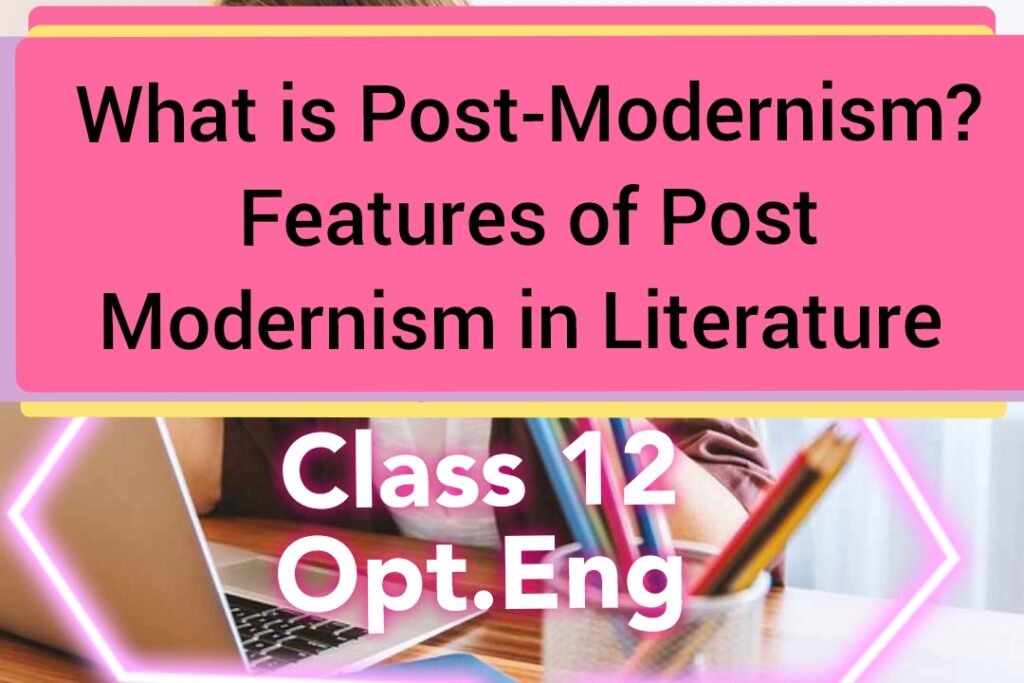What is Post Modernism? Class 12 Optional English
Postmodernism is a movement that emerged in the mid-20th century in response to modern literature. It is characterized by a self-aware and self-referential style, skepticism about big stories, and playfulness with language, structure, and narrative conventions.
Postmodern literature often challenges traditional conceptions of authorship, blurs the lines between fiction and reality, and combines various literary techniques such as intertextuality, fragmentation, model simulation and super-fiction.
It aims to break established norms and question the nature of truth, meaning, and manifestation.
Postmodernism in literature is characterized by several salient features:
1. Fragmentation:
Postmodern literature often deviates from traditional linear narratives and instead presents disjointed, non-linear stories that reflect the chaotic nature of the modern world.
2. Intertextuality:
Postmodern writers often combine references, allusions, and quotes from other texts, blurring the lines between different works and emphasizing the interdependence of literature.
3. Super fiction:
Postmodern literature frequently explores the essence of the novel, drawing attention to the fact that it is a work of construction. Authors often break the fourth wall by speaking directly to the reader and applying narrative conventions.
4. Parody and mockery:
Postmodern literature often parodies or imitates various literary styles, genres or traditions. He can borrow elements from various sources and combine them in new and unexpected ways.
5. Ironic and playful:
Postmodern writers often use irony, humor, and a sense of playfulness to challenge and subvert traditional literary norms and expectations.
6. Cultural and historical awareness:
Postmodern literature reflects a growing awareness of the cultural and historical context in which it is created. He often addressed the social, political and philosophical issues of the time.

